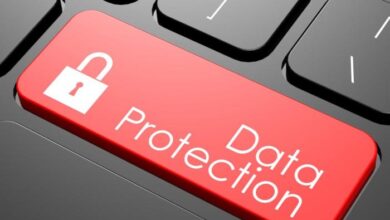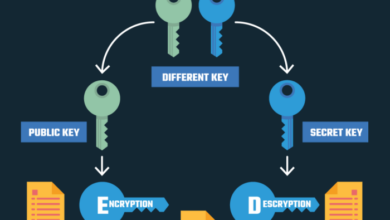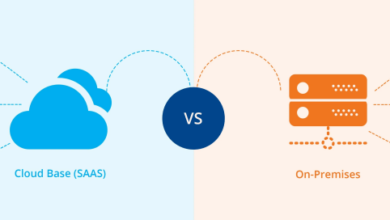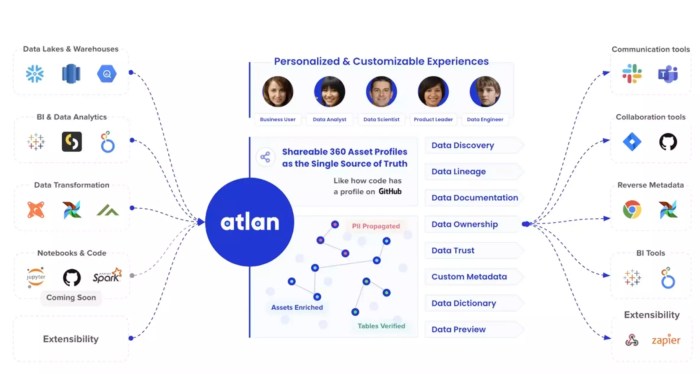
Top Data Governance Tools: Mastering Your Data Landscape
Top data governance tools are essential in today’s data-driven world, where organizations are grappling with increasing volumes and complexities of information. These tools provide a framework for managing and protecting data, ensuring its integrity, security, and compliance with relevant regulations.
Imagine a world where your data is organized, secure, and readily accessible for informed decision-making – that’s the power of data governance tools.
Data governance tools encompass a wide range of capabilities, from data discovery and cataloging to data quality management, security, and access control. By implementing these tools, organizations can establish clear data ownership, define data usage policies, and enforce data security measures, ultimately empowering them to harness the full potential of their data assets.
Introduction to Data Governance Tools: Top Data Governance Tools
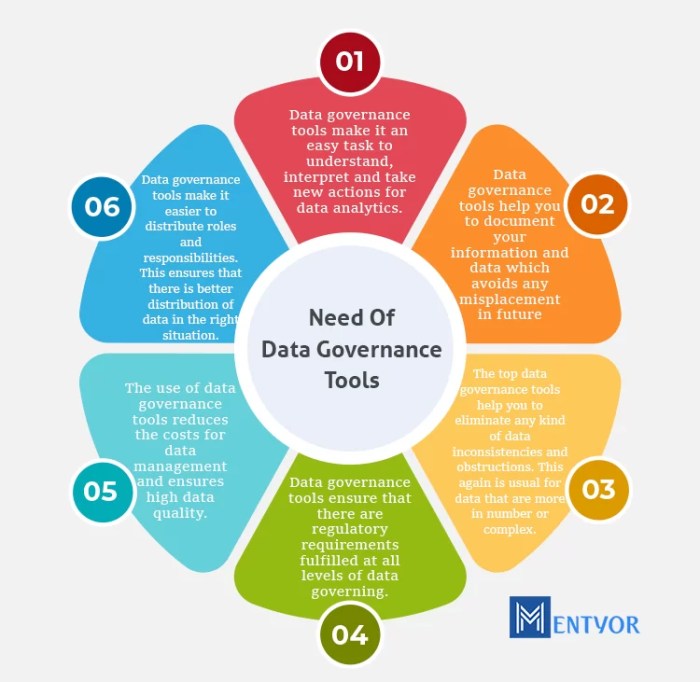
In today’s data-driven world, data has become a valuable asset for organizations. Data governance plays a crucial role in ensuring that data is managed, protected, and used effectively. Data governance encompasses the policies, processes, and controls that organizations implement to ensure that data is accurate, consistent, and reliable.
It involves establishing clear ownership, accountability, and data quality standards.The challenges associated with managing and protecting data are numerous. Data security breaches, regulatory compliance requirements, and the increasing volume and complexity of data are just a few of the hurdles organizations face.
Data governance tools are designed to address these challenges and help organizations effectively manage their data assets.
Types of Data Governance Tools
Data governance tools are software applications that help organizations manage and govern their data. They offer a range of features and functionalities, including data discovery, data quality management, data security, and data lineage tracking. The different types of data governance tools can be categorized based on their specific focus:
- Data Discovery Tools:These tools help organizations identify and understand the data they have, including its location, format, and usage. Data discovery tools can scan databases, files, and other data sources to create a comprehensive inventory of an organization’s data assets. They can also help organizations identify data silos and potential data quality issues.
Top data governance tools are essential for maintaining data integrity and compliance, and one interesting development in this space is how Microsoft is facilitating automated transactions with blockchain and the COCO framework. This integration can potentially enhance data governance by providing secure and transparent transaction records, which could be particularly valuable for industries like finance and healthcare.
- Data Quality Management Tools:These tools focus on ensuring the accuracy, completeness, and consistency of data. They can help organizations identify and correct data errors, establish data quality rules, and monitor data quality over time. Data quality management tools are essential for maintaining the integrity of data and ensuring that it is reliable for decision-making.
- Data Security Tools:These tools protect data from unauthorized access, use, disclosure, disruption, modification, or destruction. Data security tools can include encryption, access control, and data masking techniques. They are crucial for safeguarding sensitive data and meeting regulatory compliance requirements.
- Data Lineage Tracking Tools:These tools track the origin and movement of data throughout its lifecycle. They can help organizations understand how data is used, identify potential data quality issues, and comply with data privacy regulations. Data lineage tracking tools are particularly important for organizations that handle sensitive data or have complex data workflows.
- Data Governance Platforms:These platforms provide a comprehensive suite of tools and features for managing data governance across an organization. They typically include data discovery, data quality management, data security, and data lineage tracking capabilities. Data governance platforms can help organizations centralize their data governance efforts and streamline their data management processes.
Choosing the right data governance tools can be a game-changer for any organization. It’s all about finding the perfect balance between security, compliance, and user experience. Speaking of user experience, I just saw that a new version of the Beats Solo headphones just got accidentally revealed in the latest version of iOS , and it looks pretty sleek! Anyway, back to data governance, it’s crucial to remember that a strong data governance strategy can unlock significant benefits, such as increased efficiency and improved decision-making.
Key Features of Top Data Governance Tools
Data governance tools are software applications that help organizations manage and govern their data assets effectively. They provide a centralized platform for defining, implementing, and monitoring data policies, ensuring data quality, security, and compliance.
Choosing the right data governance tools can be a complex process, especially when considering factors like compliance regulations and cost-effectiveness. It’s fascinating to see how these regulations can impact even seemingly unrelated areas like consumer electronics. For example, Apple’s decision to remove chargers from their $1299 iPad Pro in certain countries due to EU regulations highlights the potential for regulatory influence on product design and consumer expectations.
This example serves as a reminder that data governance tools are not only about technical solutions but also about navigating the complex landscape of legal and social factors.
Data Discovery and Cataloging
Data discovery and cataloging are crucial for understanding the data landscape within an organization. This process involves identifying, classifying, and documenting data assets, making it easier to find, understand, and use them.
- Automated Data Discovery:Data governance tools can automatically scan data sources, including databases, files, and cloud storage, to identify and classify data assets based on predefined rules and metadata. This helps to create a comprehensive inventory of data assets.
- Data Lineage Tracking:Data lineage tracking helps organizations understand the origin and flow of data through different systems and processes. This information is essential for data quality management, impact analysis, and regulatory compliance.
- Data Profiling and Metadata Management:Data profiling involves analyzing data characteristics, such as data types, formats, and distributions, to identify potential issues and inconsistencies. Metadata management ensures that accurate and up-to-date information about data assets is readily available.
Data Quality Management
Data quality is critical for making informed decisions and ensuring the accuracy and reliability of data-driven insights. Data governance tools provide features to monitor and improve data quality.
- Data Validation and Cleansing:These tools can validate data against predefined rules and standards, identify and correct errors, and cleanse data to improve its consistency and accuracy.
- Data Quality Monitoring:Data governance tools can continuously monitor data quality metrics, such as completeness, accuracy, and consistency, to identify potential issues and trigger alerts when thresholds are exceeded.
- Data Quality Rules and Policies:Organizations can define data quality rules and policies to enforce specific data quality standards across different data sources. These rules can be used to automate data validation and cleansing processes.
Data Security, Access Control, and Compliance
Data security and compliance are essential for protecting sensitive information and meeting regulatory requirements. Data governance tools provide features to manage data security, access control, and compliance.
- Data Masking and Encryption:Data masking techniques replace sensitive data with random or fake values, while encryption safeguards data by converting it into an unreadable format. These measures help to protect sensitive data from unauthorized access.
- Access Control and Authorization:Data governance tools allow organizations to define granular access control policies, granting specific users or groups permission to access, modify, or delete data based on their roles and responsibilities. This ensures that only authorized individuals can access sensitive data.
- Compliance Monitoring and Reporting:Data governance tools can monitor compliance with relevant regulations, such as GDPR, HIPAA, and CCPA, by tracking data usage, access patterns, and security incidents. They also provide reporting capabilities to demonstrate compliance efforts to auditors and regulators.
Popular Data Governance Tools and Their Applications

Now that we’ve covered the fundamentals of data governance tools and their key features, let’s dive into some of the most popular options available in the market. These tools cater to diverse needs and can be applied across various industries.
Popular Data Governance Tools and Their Applications
Data governance tools play a critical role in ensuring data quality, security, and compliance. Understanding the strengths and target audiences of each tool can help you choose the right one for your organization.
| Tool Name | Key Features | Target Audience | Use Cases |
|---|---|---|---|
| Collibra | Data cataloging, data lineage, data quality management, data policy management, collaboration features. | Large enterprises, organizations with complex data landscapes. | Data discovery and access control, data quality improvement, regulatory compliance, data migration and integration. |
| Alation | Data cataloging, data lineage, data quality management, data governance automation, data collaboration features. | Data-driven organizations, companies seeking to improve data literacy and collaboration. | Data discovery and access control, data quality improvement, data analytics and reporting, data governance automation. |
| Data.World | Data cataloging, data exploration, data visualization, data collaboration features, machine learning capabilities. | Data scientists, analysts, and business users, organizations with a focus on data exploration and analysis. | Data discovery and access control, data analysis and visualization, data storytelling, data-driven decision-making. |
| Azure Purview | Data cataloging, data lineage, data quality management, data security and compliance features, integration with Azure services. | Microsoft Azure users, organizations seeking to manage data across the Azure cloud platform. | Data discovery and access control, data governance automation, data security and compliance, data migration and integration within Azure. |
Considerations for Selecting the Right Data Governance Tool
Choosing the right data governance tool is crucial for any organization seeking to establish a robust and effective data management framework. A well-chosen tool can streamline data governance processes, improve data quality, enhance compliance, and ultimately, drive better business outcomes.
Data Governance Tool Selection Factors
Selecting the right data governance tool requires a comprehensive evaluation of various factors. These factors are critical for ensuring that the chosen tool aligns with the organization’s specific needs, goals, and data governance strategy.
- Data Governance Objectives:Clearly define your data governance objectives. Are you aiming to improve data quality, enhance compliance, or streamline data access? Understanding your goals will help you identify the features and capabilities you need in a data governance tool.
- Data Volume and Complexity:Consider the volume and complexity of your data. Tools designed for large-scale data management may be more suitable for organizations with vast data sets.
- Data Sources and Integration:Evaluate the tool’s ability to integrate with your existing data sources and systems. Seamless integration ensures data consistency and minimizes data silos.
- Data Governance Framework:Align the tool with your existing data governance framework. The tool should support your policies, standards, and processes.
- User Roles and Permissions:Consider the different user roles and permissions within your organization. The tool should provide granular access control to ensure data security and compliance.
- Data Lineage and Impact Analysis:Evaluate the tool’s capabilities for data lineage tracking and impact analysis. These features are crucial for understanding data flow, dependencies, and potential risks.
- Data Quality Management:Assess the tool’s data quality management features, such as data profiling, validation, and cleansing. These features help ensure data accuracy and consistency.
- Reporting and Analytics:The tool should provide robust reporting and analytics capabilities to monitor data governance activities, track progress, and identify areas for improvement.
- Scalability and Flexibility:Choose a tool that can scale with your data growth and evolving data governance needs. Flexibility allows you to adapt to changing business requirements.
- Ease of Use and User Interface:Select a tool with a user-friendly interface that is easy to navigate and understand. This ensures user adoption and engagement.
- Vendor Support and Documentation:Consider the vendor’s reputation, support services, and documentation. Reliable vendor support is crucial for successful implementation and ongoing maintenance.
- Cost and Return on Investment:Evaluate the tool’s cost and potential return on investment. Consider the total cost of ownership, including licensing, implementation, and ongoing maintenance.
Comparing and Contrasting Data Governance Tools
Once you have identified your key selection factors, you can start comparing and contrasting different data governance tools. Consider their strengths and weaknesses in relation to your specific needs.
- Strengths and Weaknesses:Each tool has its unique strengths and weaknesses. Some tools may excel in data quality management, while others may be better suited for data security and compliance. Evaluate tools based on their key features and how well they align with your requirements.
- User Reviews and Testimonials:Review user reviews and testimonials to gain insights into the real-world experiences of other organizations using the tool.
- Proof of Concept (POC):Conduct a proof of concept (POC) to test the tool’s functionality and assess its suitability for your environment.
Best Practices for Evaluating and Implementing Data Governance Solutions
Evaluating and implementing data governance solutions requires a structured approach to ensure success. Here are some best practices:
- Establish Clear Requirements:Define your data governance requirements clearly and concisely. This includes identifying your objectives, data sources, and expected outcomes.
- Involve Stakeholders:Engage relevant stakeholders from across your organization, including data owners, data stewards, and business users. Their input is crucial for ensuring the tool meets the needs of all users.
- Pilot Implementation:Consider a pilot implementation to test the tool in a limited environment before rolling it out to the entire organization. This allows you to identify and address any issues early on.
- Provide Training and Support:Provide comprehensive training and support to users to ensure they understand the tool’s features and capabilities.
- Continuous Monitoring and Improvement:Monitor the tool’s performance regularly and make adjustments as needed. Data governance is an ongoing process that requires continuous improvement.
Trends and Future of Data Governance Tools
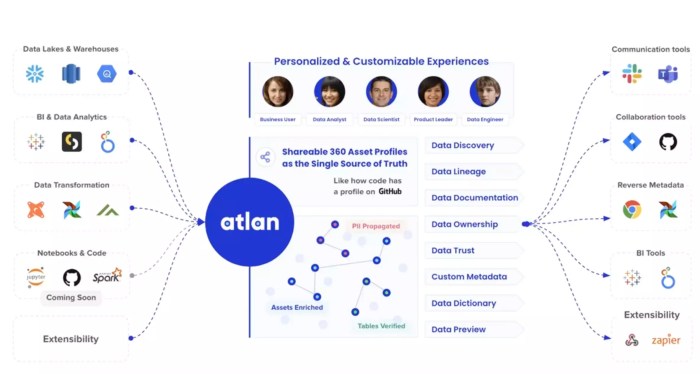
Data governance is a dynamic field, constantly evolving to address the ever-changing landscape of data management and security. The increasing volume, velocity, and variety of data, coupled with stringent regulations, are driving significant advancements in data governance tools. These tools are becoming more sophisticated, incorporating artificial intelligence (AI) and machine learning (ML) capabilities to automate tasks, improve efficiency, and enhance data quality.
Impact of Data Privacy Regulations, Top data governance tools
Data privacy regulations, such as the General Data Protection Regulation (GDPR) and the California Consumer Privacy Act (CCPA), have had a profound impact on data governance. These regulations mandate organizations to implement robust data governance frameworks to ensure the protection of personal data.
As a result, data governance tools are increasingly incorporating features to comply with these regulations, such as:
- Data mapping and inventory:Tools are now equipped to automatically identify and classify personal data, making it easier to comply with data subject access requests and data deletion requirements.
- Consent management:Tools help organizations manage user consent for data collection and processing, ensuring compliance with regulations.
- Data breach detection and response:Tools provide real-time monitoring and alerting capabilities to detect and respond to data breaches promptly, minimizing potential damage and ensuring compliance with regulatory reporting requirements.
The Role of AI and ML in Data Governance
AI and ML are transforming data governance by automating tasks and improving data quality. These technologies enable:
- Automated data discovery and classification:AI algorithms can automatically identify and classify data based on predefined rules and patterns, reducing manual effort and improving accuracy.
- Data quality monitoring and improvement:ML models can detect anomalies and inconsistencies in data, helping organizations identify and address data quality issues proactively.
- Data risk assessment and mitigation:AI can analyze data to identify potential risks, such as data breaches or compliance violations, and suggest mitigation strategies.
Future Directions in Data Governance Tools
The future of data governance tools is promising, with several exciting trends on the horizon:
- Integration with cloud platforms:Data governance tools are increasingly being integrated with cloud platforms, providing a unified platform for data management and governance across different cloud environments.
- Data governance as code:This approach uses code to define and enforce data governance policies, enabling greater automation and scalability.
- Data governance for the edge:With the rise of edge computing, data governance tools are being extended to manage data at the edge, ensuring data security and compliance in distributed environments.



